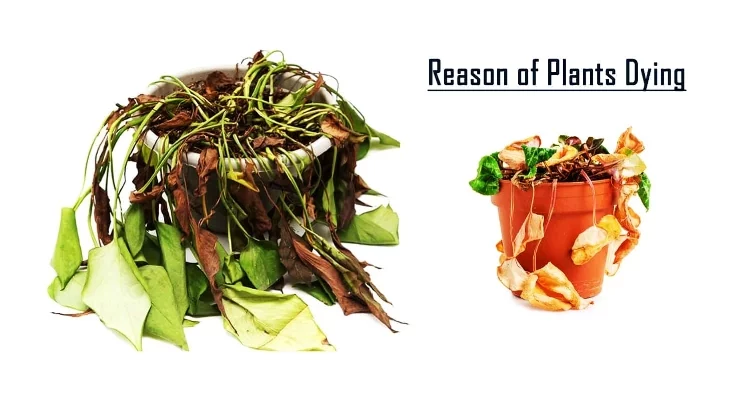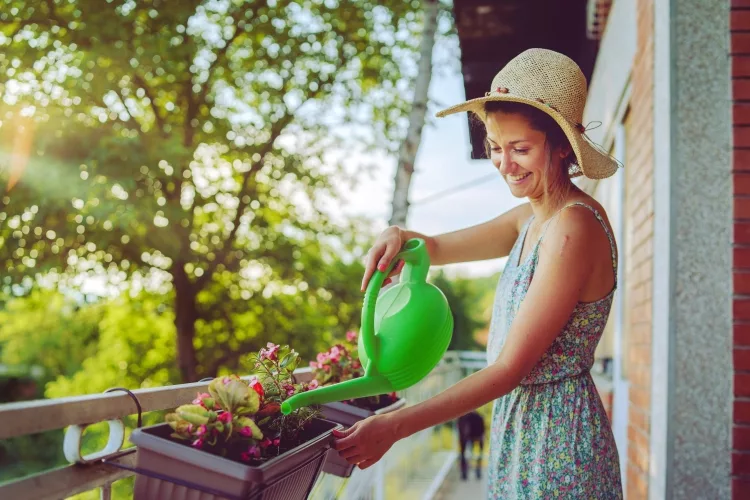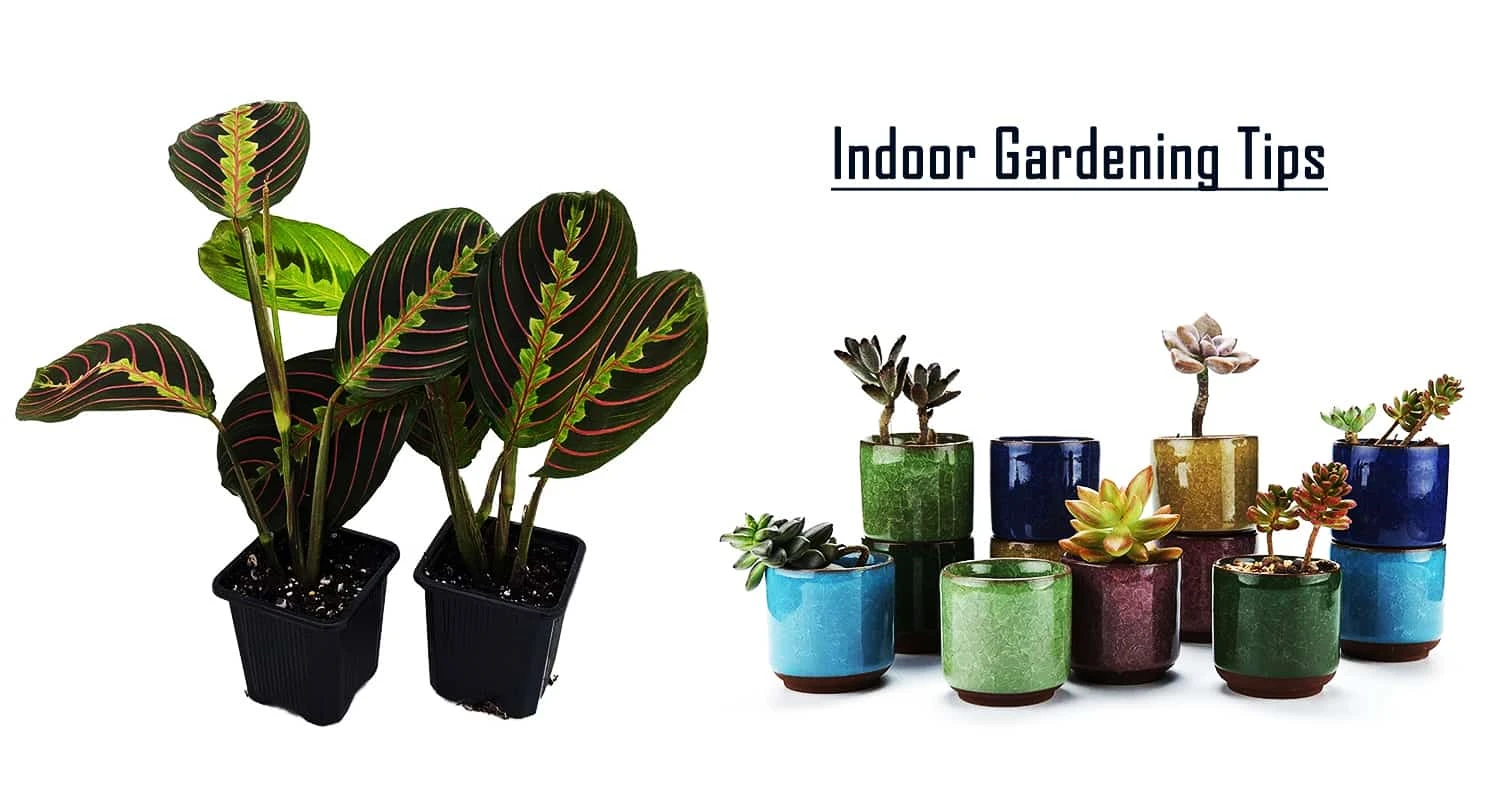reviewed by Christina Lopez
Although watering seems simple enough, there is more to it than dumping a glass of water in a pot. It is vital to learn how to water herbs and plants correctly. As containerized plantings, they take extra care and practice to get it right. Improper watering is the leading cause of plant failure. Too much or too little leads to death.
I will walk you through some essential tips and tricks that will make watering second nature for you!
Contents

I have found that most new gardeners suffer from failures due to water issues. It is often so much love that they water more frequently than necessary. No worries! It is OK. You are learning.
I was learning once, too, and did the same things!

They are not all the same.
Although many herbs have similar water requirements, some take special care. When it comes to houseplants, there is even more diversity.
Some plants like to be damp all the time, some dry as a desert. Always look up a specific plant type and know their exact water requirements.
Plants that have been bogged down with swampy soil will limp faster than their dry cousins. Sadly too much water is harder to combat and recover from.
Allowing the plant to dry out well may save it. If the water has sat too long in the roots, it could have caused rot and disease. You need to identify over-watered plants right away. I recommend re-potting for a better chance of recovery when a plant has severe damage.
Allowing your plants to go a little thirsty is easier to recover from. Often an excellent hardy drink will lift them back up into production. They need to be carefully watched after. Repeatedly stressed plants become more vulnerable to disease and pest infestations.
Many people have county or Municipal water. Public waters are often treated with chemicals, including chlorine. These are harmful to any plants straight from the tap.
You can help your plant water with these tips:

Drainage holes in your containers are essential to ensure balanced watering takes place. When no drainage holes exist, over-watering can occur. Your plant’s roots could rot by sitting in damp soil and a lack of air circulation.
Some containers that black holes can have added. I find an easy way with plastic pots is to use the tip of solder iron. It prevents cracking and provides excellent, even uniform holes. Metal or tins style pots can be drilled or punctured with an awl.
Glass pots become a bit trickier if pre-made holes do not exist. Look for planting inserts that match the size of your pots. These come with drain holes. You can still have your pretty, decorative pots with the benefits of essential drainage holes.
Routines make it easy for you, but plants rarely comply. Wouldn’t it be nice to say, “I will water plants on Monday and Friday”? Although this works for you, it rarely works out well for the plants. Your consistent watering could lead to over and under watering issues.
A plant watering schedule will never work! There are too many factors that can influence an individual plant’s water needs.
This is just an example of the different things that affect the timings of a herb or plant’s thirst. You will even find that some days they are thirstier than others for no reason at all.
Don’t Schedule, Test!
Most container plantings can be tested by sticking your finger in the soil about an inch. When it feels dry down that far, it is time to water. If you still feel moisture, it is not time yet.
They will not stay consistent either. As your plants grow or the seasons change, so will their water needs.
There are advantages and disadvantages to both methods of watering. Nature itself would seem to prefer the top watering method. Think of rain. However, after the rain has passed, we miss that most of the water absorption done by a plant is through the ground moisture.
In containers, retained rainwater absorption is not a natural occurrence. The only way to duplicate that process is through bottom watering.
Not at the same time! Whenever possible, try to do a combination of both methods. I water from the bottom with most of my plants. Every third time I will water from the top. I use this as a method to bring balance to watering. It gives me the advantages of both approaches.
You could easily save yourself a lot of time and hassle with self-watering containers. They will work with most plants. Stress for the most part. Plants that prefer dryer soils or have other specific soil and water needs do not fare well in these types of planters.
A sub-irrigated planter or SIP is a type of self-watering container. The SIP method, like other self-waterers, introduces water from the bottom of the pot. In higher-end landscaping projects and production gardens, these can be automated water dispensers. Comparable to some hydroponics systems.
A special watering tip!
Plants that begin to have an increase in water demands may simply be outgrowing their pots. They could be giving you a great indication that they are getting too big for their pots. Significant watering changes can be early alarms alerting you to possible upcoming root bound issues.
Give a quick check –
Knowing how to water herbs and plants is truly easy when you know the right way. I hope that this article helps you from making the same mistakes I made starting.
It is possible to love your plants too much sometimes. Water is one of them!
What gardening tasks have you thought should be easy but have proven more difficult for you? Remember that you learn as much from failures as you do from success. I wasn’t born with green thumbs. I had to grow them!
Could you drop me a comment? I want to help and hear from you!
Happy Gardening!
 |
 |
 |
 |

About Christina Lopez
Christina Lopez grew up in the scenic city of Mountain View, California. For eighteen ascetic years, she refrained from eating meat until she discovered the exquisite delicacy of chicken thighs. Christina is a city finalist competitive pingpong player, an ocean diver, and an ex-pat in England and Japan. Currently, she is a computer science doctoral student. Christina writes late at night; most of her daytime is spent enchanting her magical herb garden.
 |
 |
 |
 |
Get new FREE Gifts. Or latest free growing e-books from our latest works.
Disable Ad block to reveal all the links. Once done, hit a button below
 |
 |
 |
 |